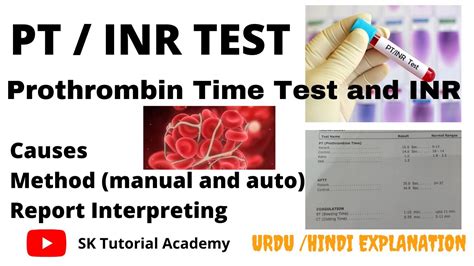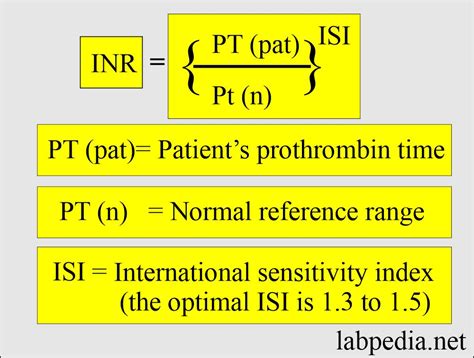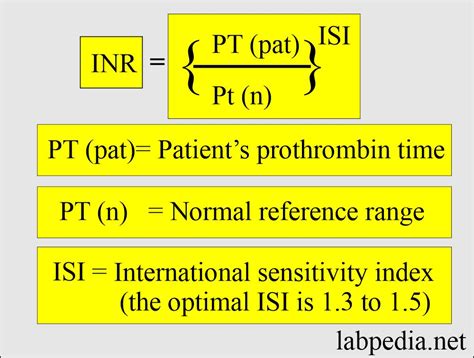Intro
Learn about Protime INR testing with our comprehensive guide, covering warfarin therapy, blood clotting, and coagulation management, to ensure accurate results and optimal patient care.
The Protime INR test is a crucial diagnostic tool used to measure the time it takes for blood to clot, helping healthcare professionals monitor patients on warfarin therapy. Warfarin is a blood thinner commonly prescribed to prevent blood clots, which can lead to stroke, heart attack, or other cardiovascular conditions. The Protime INR test, also known as the prothrombin time (PT) test, plays a vital role in ensuring the safe and effective use of warfarin.
The importance of the Protime INR test cannot be overstated, as it helps healthcare providers adjust warfarin doses to achieve optimal anticoagulation levels. If the INR is too low, the patient may be at risk of developing blood clots, while an INR that is too high increases the risk of bleeding complications. Therefore, regular Protime INR testing is essential for patients on warfarin therapy to minimize the risk of adverse events.
Understanding the Protime INR test and its significance is crucial for patients, healthcare professionals, and caregivers. This article aims to provide a comprehensive guide to the Protime INR test, including its purpose, procedure, interpretation, and management of results. By exploring the ins and outs of the Protime INR test, readers will gain a deeper understanding of this vital diagnostic tool and its role in ensuring the safe and effective use of warfarin therapy.
What is the Protime INR Test?

Why is the Protime INR Test Performed?
The Protime INR test is performed to monitor patients on warfarin therapy. Warfarin is a blood thinner that works by inhibiting the production of clotting factors in the liver. The Protime INR test helps healthcare professionals determine whether the warfarin dose is effective in preventing blood clots without increasing the risk of bleeding complications.How is the Protime INR Test Performed?

What are the Normal Values for the Protime INR Test?
The normal values for the Protime INR test vary depending on the laboratory and the specific test used. In general, a normal INR value is between 0.9 and 1.1. For patients on warfarin therapy, the target INR range is usually between 2.0 and 3.0, although this may vary depending on the individual patient's condition and the specific treatment goals.Interpreting Protime INR Test Results

- INR value < 2.0: The warfarin dose may need to be increased to achieve optimal anticoagulation levels.
- INR value between 2.0 and 3.0: The warfarin dose is within the target range, and the patient is at a lower risk of blood clots and bleeding complications.
- INR value > 3.0: The warfarin dose may need to be decreased to reduce the risk of bleeding complications.
- INR value > 4.0: The patient is at a high risk of bleeding complications, and the warfarin dose should be decreased or the patient should be monitored closely.
Management of Protime INR Test Results
The management of Protime INR test results depends on the patient's medical condition, warfarin dose, and other factors that may affect the test results. The following are some general guidelines for managing Protime INR test results:- If the INR value is too low, the warfarin dose may need to be increased to achieve optimal anticoagulation levels.
- If the INR value is too high, the warfarin dose may need to be decreased to reduce the risk of bleeding complications.
- If the INR value is within the target range, the warfarin dose can be continued, and the patient can be monitored regularly to ensure that the INR value remains within the target range.
Factors that Affect Protime INR Test Results

- Warfarin dose: The warfarin dose can affect the INR value, and changes to the dose can impact the test results.
- Diet: Certain foods, such as leafy green vegetables, can affect the INR value.
- Medications: Certain medications, such as antibiotics and anti-inflammatory medications, can affect the INR value.
- Medical conditions: Certain medical conditions, such as liver disease and kidney disease, can affect the INR value.
- Age: Older adults may be more sensitive to warfarin and may require lower doses to achieve optimal anticoagulation levels.
Tips for Patients on Warfarin Therapy
The following are some tips for patients on warfarin therapy:- Take warfarin exactly as prescribed by your healthcare provider.
- Keep all appointments with your healthcare provider to monitor your INR value.
- Inform your healthcare provider of any changes to your diet, medications, or medical conditions.
- Avoid taking any new medications without consulting your healthcare provider.
- Wear a medical alert bracelet or carry a card with your warfarin dose and INR value.
Conclusion and Next Steps

We invite you to share your thoughts and experiences with the Protime INR test in the comments section below. If you have any questions or concerns, please do not hesitate to reach out to your healthcare provider. Additionally, you can share this article with friends and family members who may be interested in learning more about the Protime INR test.
What is the purpose of the Protime INR test?
+The Protime INR test is used to measure the time it takes for blood to clot, helping healthcare professionals monitor patients on warfarin therapy.
How is the Protime INR test performed?
+The Protime INR test is performed by drawing a blood sample from a vein in the arm and sending it to a laboratory for analysis.
What are the normal values for the Protime INR test?
+The normal values for the Protime INR test vary depending on the laboratory and the specific test used, but a normal INR value is usually between 0.9 and 1.1.
